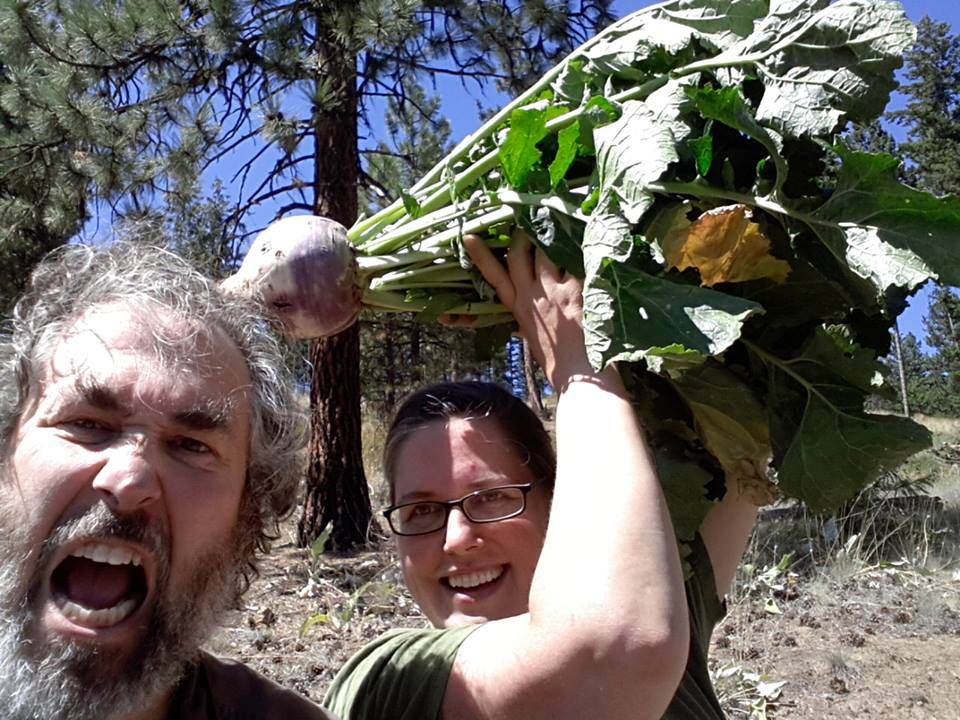
 7
7




 1
1




Idle dreamer
 5
5












Tyler Ludens wrote:I would also like to see any examples of this!




Idle dreamer




We can green the world through random acts of planting.




Idle dreamer




Tyler Ludens wrote:I can see it working better in a cool and damp location than in a hot and dry one, with high evaporation.




 1
1




 2
2












Idle dreamer




 1
1




Tyler Ludens wrote:But no vegetables or fruit in that video.
We can green the world through random acts of planting.
 4
4




Idle dreamer
 1
1








Tyler Ludens wrote:Thanks, I'm familiar with it. What we're really wanting to see is someone growing normal fruit and vegetables in a dry climate, without irrigation. An actual example, not a theoretical example. I hope I don't seem impatient, but, it's something we keep seeing people claim - growing a food garden without irrigation in a dry climate. What some of us are wanting to see, are actual examples of this, and have been looking for such an example literally for years.
David Little in California has 30 acres dryland farmed.
http://www.thelittleorganicfarm.com/The_Farm.html

We can green the world through random acts of planting.




Jd Gonzalez wrote:David Little in California has 30 acres dryland farmed.
http://www.thelittleorganicfarm.com/The_Farm.html




Idle dreamer








Idle dreamer









 2
2









 4
4












Tyler Ludens wrote:Thanks, I'm familiar with it. What we're really wanting to see is someone growing normal fruit and vegetables in a dry climate, without irrigation. An actual example, not a theoretical example. I hope I don't seem impatient, but, it's something we keep seeing people claim - growing a food garden without irrigation in a dry climate. What some of us are wanting to see, are actual examples of this, and have been looking for such an example literally for years.
I wrestled with reality for 36 years, and I'm happy to say I finally won out over it.

 1
1




Gilbert Fritz wrote:So a dryland orchard here in Denver ought to be quite doable, then.




Joseph Lofthouse wrote: I find Gojiberries sometimes in the deep desert.
—Lycium exsertum. (100) LYCI-22. Packet: $2.50
'WOLFBERRY'. Profuse small lavender flowers followed by abundant bright red edible berries.
Spiny shrub to 3 - 6 feet. Low deserts, Arizona and México. Very drought resistant.
The berries were eaten in great quantities by the Indians, fresh, cooked, or dried like
raisins. Good wildlife shrub. Germinates in 2 - 6 weeks.








 2
2








Marijke Groothuis wrote:For what it is worth, I live in Australia and we have extemely hot summers here. Last year I began my food forest (or what is supposed to become one!) by making triangular planters out of tightly bound small straw bales. Fruit trees and native trees were planted above ground in those planters and then I watered the straw, NOT the soil.
Will be interesting to see what this year will bring, but so far it is looking good...
I wrestled with reality for 36 years, and I'm happy to say I finally won out over it.




 4
4




 2
2







|
He does not suffer fools gladly. But this tiny ad does:
Homestead Pigs Course
https://permies.com/wiki/365748/Homestead-Pigs
|




